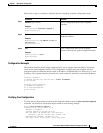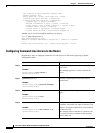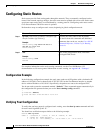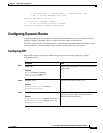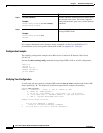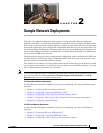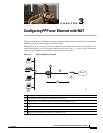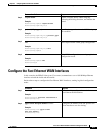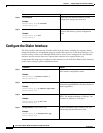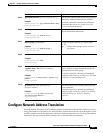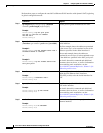
CHAPTER
2-1
Cisco Secure Router 520 Series Software Configuration Guide
OL-14210-01
2
Sample Network Deployments
This part of the software configuration guide presents a variety of possible Ethernet and Digital
Subscriber Line (DSL)—based network configurations using the Cisco
Secure Router 520 Series router.
Each scenario is described with a network topology, a step-by-step procedure that is used to implement
the network configuration, and a configuration example that shows the results of the configuration. The
Cisco Secure Router 520 Ethernet-to-Ethernet routers can be used in the Ethernet-based scenarios and
the Cisco Secure Router 520 ADSL-over-POTS and Cisco Secure Router 520 ADSL-over-ISDN routers
can be used in the DSL-based scenarios.
The first network scenario provides a simple network configuration: point-to-point protocol (PPP) over
the WAN interface with Network Address Translation (NAT). Each successive scenario builds on the
previous scenario by configuring another key feature.
The scenarios do not address all of the possible network needs; instead, they provide models on which
you can pattern your network. You can choose not to use features presented in the examples, or you can
add or substitute features that better suit your needs.
Note To verify that a specific feature is compatible with your router, you can use the Software Advisor tool.
You can access this tool at www.cisco.com > Technical Support & Documentation > Tools &
Resources with your Cisco username and password.
For Ethernet-Based Network Deployments
Use the following configuration examples to assist you in configuring your router for Ethernet-based
networks.
• Chapter 3, “Configuring PPP over Ethernet with NAT”
• Chapter 5, “Configuring a LAN with DHCP and VLANs”
• Chapter 6, “Configuring a VPN Using Easy VPN and an IPsec Tunnel”
• Chapter 7, “Configuring VPNs Using an IPsec Tunnel and Generic Routing Encapsulation”
• Chapter 8, “Configuring a Simple Firewall”
For DSL-Based Network Deployments
Use the following configuration examples to assist you in configuring your router for DSL-based
networks.
• Chapter 4, “Configuring PPP over ATM with NAT”
• Chapter 5, “Configuring a LAN with DHCP and VLANs”
• Chapter 6, “Configuring a VPN Using Easy VPN and an IPsec Tunnel”



